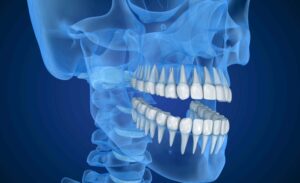Header logo
header top contact widget
Dental Technology
Overcome Obstacles To Achieve A Confident Smile
Posted on Sep 12, 2022 by William J. Claiborne, DDS MS
It’s not unusual to see a new patient who has delayed seeking advanced dental care for many years because of perceived obstacles. I say “perceived” because many of these obstacles are not nearly so daunting once people actually learn more there are solutions for about any dilemma.
For example, a bride-to-be with a “gummy smile” realizes, after years of postponement, that she can have her gum line corrected through laser treatment that provides quick recovery with an easy payment plan.
Or, an individual who has worn a self-described “wobbly” denture for many years and overcame misperceptions about the need for pre-placement bone rebuilding. Through specially-designed and uniquely placed dental implants (“All-On-4”), patients may be able to bypass the extended treatment time and added expense to restore bone mass.
In a conversation once, a friend reminded me “we don’t know what we don’t know.” How true. Often, once we learn the details surrounding a big decision in our lives, moving forward becomes an easier process. Achieving goals gets closer and closer.
Below are a few of the common barriers that patients can often overcome when it comes to periodontal treatment or dental implants…
COST: There are few things in life that last a lifetime. When it comes to cosmetic gum enhancement and dental implants, the lasting benefits make these procedures an excellent investment. However, treatment cost can seem challenging to some budgets. For people who wish to enjoy the benefits of their results without straining their budget, payment plans can be the solution.
There are a number of these financial options, most requiring no down payment, are interest-free, and have no prepayment penalty. For some people who see the total treatment fee at first, vocalizing their concerns regarding payment is an uneasy thing to do. Yet, once we are made aware of the need for budget-friendly options, we are able to help many people move forward with treatment that can enhance physical appearance, self-confidence and emotional security. Those are pretty priceless benefits!
DENTAL FEAR: Dental fear and high anxiety associated with dental visits is not rare. As a matter of fact, some estimates rank this as affecting up to 60% of U.S. adults. There are a number of reasons that lead to these fears. For some people, they are able to overcome these fears once in the hands of a gentle, caring dentist. For those whose fears are so deeply embedded they cannot, we offer a special team who administer and oversee the safety of oral and IV sedation (twilight sleep).
In our office, we employe the skills of a a medical doctor to provide sedation and anesthesia for our patients. Dr. Stone has published several articles on techniques and safety in anesthesia as well as a book contribution on intravenous access.
TIME IN TREATMENT: We all live lives that are busy. Schedules seem to be overloaded so much of the time. This is why time in treatment can seem “too much” to add to one’s schedule. However, the advanced skills of a periodontal specialist, coupled with our immense array of advanced technology means we are able to alleviate many of these worries for our patients.
Once the patient’s imaging and treatment plan is in hand, we are often able to schedule patients soon thereafter. With the relaxation provided by our sedation options, we can perform long procedures in a single appointment rather than have the patient return for several appointments to complete treatment. Too, using our advanced imaging and computerized technology, treatment is more precise, often more conservative, and healing time improved.
TREATMENT SATISFACTION: The best way to make a decision that works to achieve your meeds and goals is through a consultation appointment. During this time, we can discuss what options are best for your individual needs, estimated treatment time, costs, and comfort options. This is a time when you can get to know us and we can give you the information that is factual and applicable to you. And, this is where trust is formed. I have a long-standing reputation for my commitment to patient excellence.
Begin by calling our Asheville periodontal dental office and speaking to our friendly staff at: 828-274-9440. Or, tap here to see our beautiful Western NC location.
Choose A Periodontist To Correct A Gummy Smile
Posted on Aug 29, 2022 by William J. Claiborne, DDS MS
About Periodontal Plastic Surgery
When Lauren Hutton, the model well-known for a space between her front teeth, began modeling, she felt she needed to camouflage the gap (or “diastema”). Yet, she soon began to feel it was a unique feature that set her apart from the others. She was right, and now at the age of 77, she’s been on more front covers than nearly any other model.
Each smile is unique. Hopefully, your smile makes you feel good every time you share it. And, the very act of smiling has been shown to release endorphins in the brain. Those are the chemicals that create a bit of a ‘natural high.’ Smiling is obviously an asset to our well-being.
If you have a “gummy” smile, you may be perfectly fine with it. After all, it is not detrimental to oral health if you care for your gums properly (which goes for everyone). And, it can be a positive part of your personality. Katie Couric has a gummy smile and shares hers openly.

“Gummy” Smile
However, not everyone with this trait feels comfortable with the look nor the way it makes them feel when smiling. Some people tend to suppress a full smile. Others often conceal their smile with a hand when smiling fully or laughing. Some people smile with their lips only.
A gummy smile, in the periodontal specialty, is known as EGD, an abbreviation for excessive gingival display or a gingival smile (GS). The trait occurs more often in females than in males. (Gingival is of or relating to the gums.)
Esthetically, a balanced smile typically shows the front top 6 or 8 teeth. Arching each tooth, there is generally minimal gum tissues showing , and sometimes none. Another esthetic complement to a smile is having gum tissues that show a slight arch over each tooth at a similar line as those that arch adjacent teeth. Gums that are lower over one or two teeth tend to create a jumbled look in a full smile.
When the height of gum tissues distract from the appearance of a smile, a periodontist is your expert. This dental specialist has specialized skills in all aspects of oral tissues. Through their advanced training, they are able to safely and beautifully reshape the tissues that surround teeth.
For people who wish to have a gummy smile or uneven gum line re-contoured, a periodontist performs a gingivectomy. A gingivectomy is a procedure during which excess gum tissue is remove. During this, the gumline is sculpted to give your smile balance with a more even smile line.
In addition to repairing a gummy smile, a gingivectomy is involved in a procedure known as crown lengthening. Crown lengthening involves removing the excessive gum tissue to expose more of the crown of the tooth, as well as sculpting the gumline to make it higher up. After the gum tissues are shaped, a crown is typically placed to protect the tooth above the gum line and to create a more beautiful smile.
A crown lengthening may also help to save a tooth from removal. When a tooth breaks off near the gum line, a crown lengthening can be performed to expose a sufficient amount of the tooth’s base so it can support a crown.
Another procedure a periodontist expertly performs is gum grafting. This is often to cover exposed roots, to reduce further gum recession, protect vulnerable tooth roots from decay, and improve your smile. Recession can occur as a result of periodontal disease, which causes tooth roots to become exposed and makes the teeth look long.
Gum tissues are very tender tissues with many nerves. Procedures that involve the gums must be performed with precision to minimize discomfort and speed healing time. A periodontist excels in the skills to create an optimal outcome with the most conservative treatment needed.
Our Asheville periodontal dental office provides some of the most advanced imaging and computerized technology available. This includes cone beam 3D imaging and laser dentistry. Additionally, we provide oral and IV sedation (“twilight sleep”) so patients are able to relax or snooze comfortably while being monitored by specially-trained team members who use advanced safety equipment.
Begin with a consultation with an experienced periodontist, who can answer your questions thoroughly and determine the best treatment option for your individual needs. Call 828-274-9440.
Some sources:
https://www.colgate.com/en-us/oral-health/mouth-and-teeth-anatomy/3-treatment-options-for-a-gummy-smile
https://www.researchgate.net/figure/Female-and-male-percentages-in-the-gummy-smile-sample_tbl1_340258838
Dental Pain Relief With Patient’s Well-Being In Mind
Posted on Aug 19, 2022 by William J. Claiborne, DDS MS
 The body relies on a nervous system for many reasons; one reason being to alert us that something is wrong. For example, when we burn our finger on the stove, the brain quickly sends pain sensations so we can remove the finger and take action to help it repair.
The body relies on a nervous system for many reasons; one reason being to alert us that something is wrong. For example, when we burn our finger on the stove, the brain quickly sends pain sensations so we can remove the finger and take action to help it repair.
As a periodontal specialist in Asheville NC, I know how sensitive the gums can be, as well as teeth. A toothache or a cut in the mouth can be miserable for days. As a periodontist, ideally my skills allow patients to avoid being in pain by keeping their mouths healthy. When an individual maintains a clean mouth that has a low level of bacteria, they can avoid developing cavities and gum disease, which can both result in a significant amount of constant pain.
Yet, caregivers in the American healthcare system are very much aware of the opioid epidemic. We don’t want to deny legitimate patients the medications they need to get them out of pain, however, neither do we want to be a catalyst or contributor to an individual who becomes dependent on these or is trying to feed an already existing habit.
The dental profession has been very careful in this regard, according to the American Journal of Preventive Medicine. In 2012, dentists in the U. S. prescribed only 6.4% of the total opioid prescriptions. For procedures such as root canals or extractions, they help patients get through the initial part of recovery when pain levels are most extreme.
As opioid abuse became such a significant problem, dentists became more sensitive to prescribing these medications. In 2016, American Dental Association (ADA) issued a Statement on the Use of Opioids in the Treatment of Dental Pain.
“Dentists should consider non-steroidal anti-inflammatory analgesics as the first-line therapy for acute pain management … [and]should recognize multimodal pain strategies for management for acute postoperative pain as a means for sparing the need for opioid analgesics.”
Non-steroidal anti-inflammatory analgesics are commonly known as NSAIDs. These are typically over-the-counter meds, such as Advil, Aleve, Motrin, etc. These are non-opioid, oral medications for temporary relief of acute dental pain.
NSAIDs work to provide effective pain relief by reducing inflammation in the bone, dental pulp, and gum tissues. The ADA encourages dentists to consider NSAIDs as the preferred go-to method for managing acute pain. When NSAIDs are taken after a dental procedure, they have been shown as effective as opioids for reducing pain intensity. For some pain levels, the dentist may prescribe a higher dose (by prescription).
Although NSAIDs are effective and less likely to cause dependency, they can also inhibit the an enzyme responsible for producing other prostaglandins that provide numerous beneficial effects. This includes those that protect the gastrointestinal mucous lining, blood flow to the kidneys, and blood clotting.
NSAIDs could also heighten the risks for serious cardiovascular issues, including heart attack and stroke. NSAIDs gave the potential to trigger issues that complicate the effects of low-dose aspirin.
Another option for managing dental pain is the use of Acetaminophen (such as Excedrin and Tylenol). Acetaminophen is an internal analgesic available in over-the-counter medicines for the temporary relief of minor aches and pains and helping to reduce fever. It can also be found in medicines that contain more than one active ingredient to treat migraines.
Acetaminophen is often used for things like headaches, muscle aches and menstrual cramps. It can also be an ingredient in other medicines.
Please know that I want no less for my patients’ comfort than I would want for myself or loved ones. Pain can be an overwhelming problem, although gum disease and cavities are highly preventable. With proper at-home oral hygiene and regular dental check-ups, an individual can keep a healthy smiles and prevent tooth loss (to a signifiant degree).
Even so, the Agency for Healthcare Research & Quality shared that there were more than 615 emergency room visits for every 100,000 people in the U.S. in 2018. The statistic is much higher for low-income and minority groups.
Let’s work together to protect our population from the impact it has endured from opioid addiction. Prior to treatment, we will discuss the potential for discomfort or pain afterward and standard treatment options to help ease you through recovery.
If you are experiencing sore, tender gums that bleed easily when brushing or a deep ache like a toothache, do not delay in seeking dental care. When something is wrong in the mouth, there are very few instances that will go away on their own. Most problems worsen over time, leading to higher levels of discomfort and more-involved treatment to resolve the problem.
In our Asheville eriodontal dental office, we offer some of the most advanced technology available in dentistry, including ConeBeam 3D imaging, laser dentistry, and computerized dental implant placement technology. Additionally, we provide oral and I.V. sedation, safely and monitored closely.
Call 828-274-9440 or tap here to arrange an appointment.
Sources:
https://www.deltadentalwa.com/blog/entry/2019/09/dental-pain-management
https://hcup-us.ahrq.gov/reports/statbriefs/sb280-Dental-ED-Visits-2018.pdf
Dental Implants’ Value Gives ‘Priceless’ Smiles
Posted on Jul 25, 2022 by William J. Claiborne, DDS MS
Times are tight. With the higher cost of gas, groceries and utilities, people are getting very value-conscious with their dollars. The ‘frills’ we once indulged in are now being scrutinized as to the value they truly bring.
Yet, there is no better time to explain the wisdom of investing in dental implants. For people who have shed dentures, partials, and gaps in their smiles with this ideal tooth replacement option, they are “priceless.”
Although our ‘permanent’ teeth are intended to last a lifetime, we know that not all of them do, no matter how diligent we are with at-home oral hygiene and regular dental check-ups. Teeth can break or be “knocked out.” Cavities can weaken a tooth, even after it’s been ‘filled.’ That’s why your general dentist may advise a crown, to help you avoid this risk.
A general dentist is a proponent of helping patients keep their natural teeth healthy. Your dentist knows that a lost tooth can lead to a long list of time and expense in the future. And, not promptly replacing a tooth can lead to a higher risk for adjacent teeth to be lost as well.
The teeth you see in the mirror are held in stable position because of the roots that are firmly embedded in the jaw bone. In these roots are veins and nerves that extend into the bone that supports them. From this, the jaw bone is supplied with blood while the presence of the roots provide stimulation that helps the bone to maintain its mass.
The stimulation that tooth roots provide is similar to how muscle will atrophy if not used. For example, when an arm or leg is confined to a cast for an extended time, the doctor will often advise physical therapy to rebuild the muscle after its removed. Unused, the muscle mass declines.
Unfortunately, when the jaw bones decline in mass, rebuilding requires the intervention of a periodontal specialist. (Fear not, however. A periodontist can provide this.)
Bone loss is what causes a change in how partials and dentures fit. These appliances, when first made, are custom-made for the unique contours of your gum “ridge.” A ridge is the raised arch in your mouth where tooth roots are (or were once) held.
As the bone height declines, the denture or partial becomes less secure as the foundation flattens. Adhesives or pastes are needed more frequently. Relines may help, but only temporarily.
And, the down side continues. When bone loss begins, it accelerates with each passing year. Eventually, a shrinking jaw bone reveals itself in changes in facial appearance. Initially, there may be deep wrinkling around the mouth. The corners of the mouth turn downward. Jowls form and the chin becomes pointed.
As bone loss becomes more severe, the mouth seems to sink into the face. The nose and chin get closer, giving a “granny look”. A thin jaw bone is also more vulnerable to breaks.
This is where dental implants have a particular edge (amongst other things). Like natural teeth, implants are held by the upper or lower jaws. Dental implants are able to mimic the stimulation needed to prevent the process of “resorption,” as its known.
Another bonus of dental implants is their ability to help surrounding natural teeth remain healthy. Unlike a crown-&-bridge combination, dental implants do not rely on neighboring teeth for support. Thus, the integrity of surrounding teeth is protected.
Because dental implants are supported by the jaw bone, sturdy and dependable biting and chewing strength is restored. For people who experienced the frustrations of trying to eat with a “wobbly” or “slippery” denture, they love the restored ability to eat a healthy diet. And, the shadow of embarrssment no longer looms when eating out with friends.
Dental implants come in many sizes and shapes, each system designed to accommodate various needs and preferences. Couple this with the extremely high success rate of dental implants, higher than any implant-in-bone option.
 Dental implants are also designed to last a lifetime. I can think of very few things that provide this kind of value. With proper selection and maintenance, they will never need replacing or repair. This makes them an excellent investment.
Dental implants are also designed to last a lifetime. I can think of very few things that provide this kind of value. With proper selection and maintenance, they will never need replacing or repair. This makes them an excellent investment.
A periodontist is a dental specialist who is trained to understand the intricate concepts involved in selecting the proper type of implant and skilled at placing implants at proper depths and angles. A periodontist is also able to optimize patient comfort during treatment and throughout the healing phase.
In addition to this advanced training, our dental office offers some of the most advanced technology available. This aids in the diagnosis and treatment planning of dental implants, providing patients with optimized comfort and outcomes. This technology, combined with our advanced skill level, can help you enjoy a comfortable, efficient experience that allows you to enjoy a lifetime of confident smiles.
As a periodontist in Western NC, we have also developed a reputation for respectful, gentle care. Here, oral and IV sedation are available as needed, administered safely and to the highest standards by a doctor of anesthesiology. If fear or anxiety is a concern, feel free to mention these during a private consultation.
To learn more or to schedule a consultation, call 828-274-9440. Or, ask to begin with an initial periodontal examination.
Recent Posts
Categories
Archives
- September 2024
- August 2024
- July 2024
- June 2024
- May 2024
- April 2024
- March 2024
- February 2024
- January 2024
- December 2023
- November 2023
- October 2023
- September 2023
- August 2023
- July 2023
- June 2023
- May 2023
- April 2023
- March 2023
- February 2023
- January 2023
- December 2022
- November 2022
- October 2022
- September 2022
- August 2022
- July 2022
- June 2022
- May 2022
- April 2022
- March 2022
- February 2022
- January 2022
- December 2021
- November 2021
- October 2021
- September 2021
- August 2021
- July 2021
- June 2021
- May 2021
- April 2021
- March 2021
- February 2021
- January 2021
- December 2020
- November 2020
- October 2020
- September 2020
- August 2020
- July 2020
- June 2020
- May 2020
- April 2020
- March 2020
- February 2020
- January 2020
- December 2019
- November 2019
- October 2019
- September 2019
- August 2019
- July 2019
- June 2019
- May 2019
- April 2019
- March 2019
- February 2019
- January 2019
- December 2018
- November 2018
- October 2018
- September 2018
- August 2018
- July 2018
- June 2018
- May 2018
- April 2018
- March 2018
- February 2018
- January 2018
- December 2017
- November 2017
- October 2017
- September 2017
- August 2017
- July 2017
- June 2017
- May 2017
- April 2017
- March 2017
- February 2017
- January 2017
- December 2016
- November 2016
- October 2016
- September 2016
- August 2016
- July 2016
- June 2016
- May 2016
- April 2016
- March 2016
- February 2016
- January 2016
- December 2015
- November 2015
- October 2015
- September 2015
- August 2015
- July 2015
- June 2015
- May 2015
- April 2015
- March 2015
- February 2015
- January 2015
- December 2014
- November 2014
- October 2014
- September 2014
- August 2014
- July 2014
- June 2014
- May 2014
- April 2014
- March 2014
- February 2014
- January 2014
- December 2013
- November 2013
- October 2013
- September 2013
- August 2013
- July 2013
- June 2013
- May 2013
- April 2013
- March 2013
- February 2013
- January 2013
- December 2012
- November 2012
- October 2012
- September 2012
- August 2012
- July 2012
- June 2012


